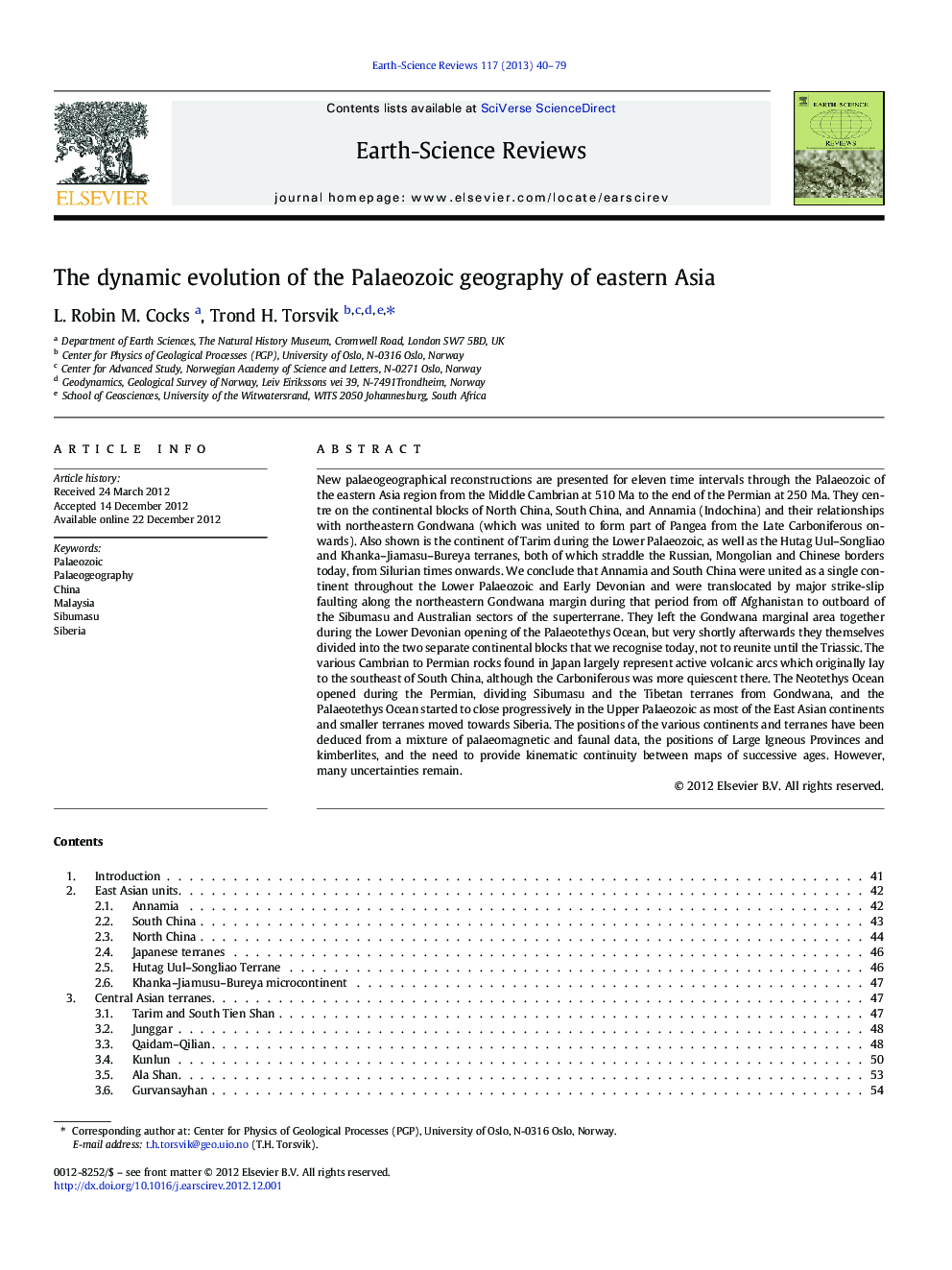| کد مقاله | کد نشریه | سال انتشار | مقاله انگلیسی | نسخه تمام متن |
|---|---|---|---|---|
| 4725951 | 1639985 | 2013 | 40 صفحه PDF | دانلود رایگان |
New palaeogeographical reconstructions are presented for eleven time intervals through the Palaeozoic of the eastern Asia region from the Middle Cambrian at 510 Ma to the end of the Permian at 250 Ma. They centre on the continental blocks of North China, South China, and Annamia (Indochina) and their relationships with northeastern Gondwana (which was united to form part of Pangea from the Late Carboniferous onwards). Also shown is the continent of Tarim during the Lower Palaeozoic, as well as the Hutag Uul–Songliao and Khanka–Jiamasu–Bureya terranes, both of which straddle the Russian, Mongolian and Chinese borders today, from Silurian times onwards. We conclude that Annamia and South China were united as a single continent throughout the Lower Palaeozoic and Early Devonian and were translocated by major strike-slip faulting along the northeastern Gondwana margin during that period from off Afghanistan to outboard of the Sibumasu and Australian sectors of the superterrane. They left the Gondwana marginal area together during the Lower Devonian opening of the Palaeotethys Ocean, but very shortly afterwards they themselves divided into the two separate continental blocks that we recognise today, not to reunite until the Triassic. The various Cambrian to Permian rocks found in Japan largely represent active volcanic arcs which originally lay to the southeast of South China, although the Carboniferous was more quiescent there. The Neotethys Ocean opened during the Permian, dividing Sibumasu and the Tibetan terranes from Gondwana, and the Palaeotethys Ocean started to close progressively in the Upper Palaeozoic as most of the East Asian continents and smaller terranes moved towards Siberia. The positions of the various continents and terranes have been deduced from a mixture of palaeomagnetic and faunal data, the positions of Large Igneous Provinces and kimberlites, and the need to provide kinematic continuity between maps of successive ages. However, many uncertainties remain.
Journal: Earth-Science Reviews - Volume 117, February 2013, Pages 40–79
